
- The Fascinating History Behind the Sagrada Familia's Design
- Exploring the Unique Architectural Features of the Sagrada Familia
- How Antoni Gaudí's Vision Shaped the Sagrada Familia
- The Symbolism in Sagrada Familia's Architectural Elements
- Understanding the Cultural Significance of the Sagrada Familia
- A Timeline of the Sagrada Familia's Construction and Development
The Sagrada Familia, an architectural wonder designed by Antoni Gaudí, stands as a testament to human creativity and devotion. Its intricate facades and breathtaking interiors tell a story that transcends time, captivating millions of visitors each year.
In this exploration, we delve into **The Enchanting Saga of Sagrada Familia: Unveiling the Architectural Masterpiece**, uncovering the rich history, innovative techniques, and symbolic elements that make this basilica a unique symbol of Barcelona. Join us as we unravel the layers of artistry and passion woven into its creation.
The Fascinating History Behind the Sagrada Familia's Design
The design of the Sagrada Familia is a remarkable journey that reflects the **visionary genius** of Antoni Gaudí. His approach was deeply rooted in nature, drawing inspiration from organic forms and structures. This led to the incorporation of unique elements such as hyperboloids and geometrical shapes, which not only serve aesthetic purposes but also improve the basilica’s structural integrity.
Gaudí's collaboration with **artisans and craftsmen** was pivotal in the evolution of the Sagrada Familia’s design. He believed in a hands-on approach, working closely with skilled workers to ensure that every detail was meticulously crafted. This collaborative spirit allowed for the fusion of traditional techniques with innovative concepts, resulting in a masterpiece that celebrates both heritage and modernity.
The Sagrada Familia's design also reflects Gaudí's **religious devotion**, as he dedicated his life to its construction. He envisioned the basilica as a catechism in stone, with each façade and element telling a biblical story. Notable features include:
- The Nativity Façade, celebrating the birth of Christ.
- The Passion Façade, depicting the suffering of Christ.
- The Glory Façade, representing his resurrection and eternal glory.
Moreover, the ongoing construction of the Sagrada Familia highlights the **importance of community involvement** and funding. As of today, the project continues to rely on donations and ticket sales, illustrating a collective commitment to completing Gaudí’s vision. This aspect of its history emphasizes how the Sagrada Familia is not just an architectural feat, but a living project that evolves through time, much like the city of Barcelona itself.
Exploring the Unique Architectural Features of the Sagrada Familia
The Sagrada Familia's architectural brilliance lies in its **innovative use of shapes and forms**. Gaudí employed hyperbolic paraboloids and conic sections to create a dynamic silhouette that distinguishes the basilica from traditional Gothic architecture. This unique approach not only enhances the aesthetic appeal but also contributes to the structural efficiency, allowing for taller and more spacious interiors that invite awe.
Another remarkable feature is the **play of light** within the basilica. Gaudí strategically designed the stained glass windows to filter natural light, resulting in a mesmerizing display of colors that change throughout the day. This intentional use of light symbolizes divine presence and brings the interior to life, creating a spiritual atmosphere that resonates with visitors.
The **forest-like columns** within the Sagrada Familia are a testament to Gaudí's deep connection with nature. Mimicking tree trunks, these columns branch out into intricate vaults, creating an organic canopy that enhances the basilica's ethereal quality. This design not only supports the structure but also evokes the feeling of being in a sacred grove, reinforcing the spiritual experience of the space.
Moreover, the Sagrada Familia showcases **symbolism in every detail**. From the intricate carvings on the facades to the meticulously designed altarpieces, each element serves a purpose. Gaudí intended for the basilica to narrate the story of Christianity, intertwining art and faith in a way that resonates on both an emotional and intellectual level. This profound narrative woven into the architecture makes the Sagrada Familia a true masterpiece of modernist design.
How Antoni Gaudí's Vision Shaped the Sagrada Familia
Antoni Gaudí's vision for the Sagrada Familia was a harmonious blend of nature and spirituality. He envisioned the basilica not merely as a building but as a vibrant expression of faith, where architecture tells the story of Christianity. Gaudí believed that each structural element should reflect a deeper meaning, resulting in a design that is both innovative and symbolic.
Key aspects of Gaudí's vision include:
- Natural Inspiration: Gaudí incorporated organic shapes and forms, creating a structure that resonates with the natural world.
- Structural Innovation: His use of hyperboloids and catenary arches allowed for unprecedented height and stability.
- Symbolic Elements: Every detail, from the facades to the interiors, conveys biblical narratives and spiritual messages.
The integration of light within the Sagrada Familia is another critical aspect of Gaudí's design philosophy. He masterfully orchestrated natural light through stained glass windows, creating a kaleidoscope of colors that shift throughout the day. This dynamic interplay not only enhances the aesthetic experience but also symbolizes divine illumination, inviting visitors to reflect on their spiritual journey.
Furthermore, Gaudí's commitment to collaboration with artisans ensured that traditional craftsmanship married with modern innovation. This partnership allowed for the creation of intricate details that embody his artistic vision. The Sagrada Familia stands as a testament to Gaudí's belief that architecture should serve both functional and spiritual purposes, making it an enduring masterpiece that continues to inspire awe and reverence.
The Symbolism in Sagrada Familia's Architectural Elements
The Sagrada Familia is not only an architectural marvel but also a profound expression of spirituality through its intricate symbolic elements. Each aspect of Gaudí's design serves a dual purpose: offering aesthetic beauty while conveying deep religious narratives. The use of natural forms throughout the basilica symbolizes the connection between the divine and the earthly, reflecting Gaudí's belief that nature is a manifestation of God's creation.
One of the most striking features is the Façade of Nativity, where each sculpture and relief is imbued with meaning. The details depict scenes from the birth of Christ, emphasizing themes of hope and renewal. Similarly, the Passion Façade starkly contrasts with its angular forms and somber expressions, symbolizing the suffering and sacrifice of Christ. This duality in design encapsulates the essence of the Christian narrative, inviting visitors to engage with the stories represented.
The interior of the Sagrada Familia further amplifies its symbolism through the use of colored stained glass windows. As sunlight filters through, it creates a vibrant tapestry of colors that transforms the atmosphere, representing the presence of the divine. The interplay of light and color not only enhances the beauty of the space but also serves as a reminder of spiritual enlightenment, guiding worshippers and visitors in their reflections.
Moreover, the forest-like columns in the nave echo the natural world, supporting the structure while evoking a sense of being enveloped by nature. These columns, resembling tree trunks, branch out towards the ceiling, creating a canopy effect that inspires awe and tranquility. This design choice reinforces the idea that architecture can foster a spiritual experience, making the Sagrada Familia not just a place of worship but also a sanctuary for contemplation.
Understanding the Cultural Significance of the Sagrada Familia
The Sagrada Familia is a cultural symbol that embodies the spirit of Barcelona, transcending mere architecture to reflect the city’s identity. As an ongoing project, it serves as a testament to **community engagement**, with locals and visitors alike contributing to its funding and construction. This collective effort underscores the deep emotional connection people have with the basilica, making it a living monument that evolves alongside the city itself.
Moreover, the basilica's innovative design challenges conventional architectural norms, positioning the Sagrada Familia at the forefront of **modernist architecture**. Its unique blend of Gothic and Art Nouveau styles showcases the creative genius of Antoni Gaudí, while also inspiring a new generation of architects to explore the boundaries of structure and form. This cultural significance not only elevates the Sagrada Familia as a masterpiece but also as a source of inspiration for artistic expression worldwide.
Additionally, the Sagrada Familia holds considerable significance in the realm of **religious devotion**. Each element is meticulously crafted to reflect biblical stories and themes, inviting visitors to engage in spiritual contemplation. This aspect of the basilica transforms it into a pilgrimage site, where individuals seek spiritual renewal and connection through the artistry and symbolism embedded within its walls.
In summary, the Sagrada Familia stands not only as an architectural marvel but as a cultural beacon representing community, innovation, and spirituality. Its ongoing narrative continues to captivate and inspire, reinforcing its status as a timeless icon that reflects the heart and soul of Barcelona.
A Timeline of the Sagrada Familia's Construction and Development
The journey of the Sagrada Familia began in **1882** when construction officially commenced under architect Francisco de Paula del Villar. However, it was the visionary Antoni Gaudí who took over in 1883, profoundly transforming the project with his unique design philosophy. His commitment to integrating nature into the architecture marked the beginning of a remarkable evolution in the basilica’s development.
Throughout the years, significant milestones have shaped the Sagrada Familia’s construction. Major events include:
- 1914: Gaudí devotes himself entirely to the project after the completion of Casa Batlló.
- 1926: Gaudí's untimely death in a traffic accident leaves the basilica unfinished, but his vision continues to inspire future generations of architects.
- 2010: The basilica is consecrated by Pope Benedict XVI, elevating it to the rank of a minor basilica, a critical recognition of its religious significance.
As of **2023**, the ongoing construction efforts are focused on completing the **twelve towers**, each representing an apostle. This ambitious goal highlights a blend of modern technology and Gaudí's original plans, ensuring that the Sagrada Familia remains a dynamic work in progress. The anticipated completion date is set for **2026**, coinciding with the centennial of Gaudí’s death, symbolizing a profound homage to his enduring legacy.
The Sagrada Familia's timeline not only reflects its architectural evolution but also captures the dedication and passion of countless artisans and craftsmen involved in its creation. Their efforts intertwine with the basilica's story, transforming it into a living testament of human creativity and faith that continues to resonate with visitors from around the world.
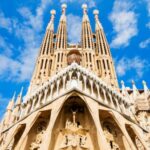 Where is Sagrada Familia Located in Barcelona: A Guide to Gaudi's Masterpiece
Where is Sagrada Familia Located in Barcelona: A Guide to Gaudi's Masterpiece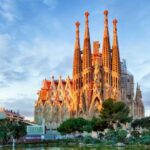 The Fascinating Facts You Need to Know About La Sagrada Familia in Barcelona
The Fascinating Facts You Need to Know About La Sagrada Familia in Barcelona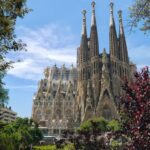 The Enigmatic History of Sagrada Familia in Barcelona
The Enigmatic History of Sagrada Familia in Barcelona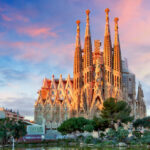 The Completed Sagrada Familia: Immersive Beauty Unveiled
The Completed Sagrada Familia: Immersive Beauty UnveiledIf you want to know other articles similar to The Enchanting Saga of Sagrada Familia: Unveiling the Architectural Masterpiece you can visit the category WHERE YOU CAN GO.
Deja una respuesta

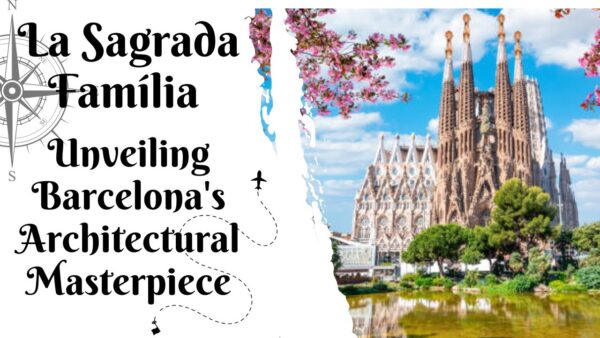








Read more!